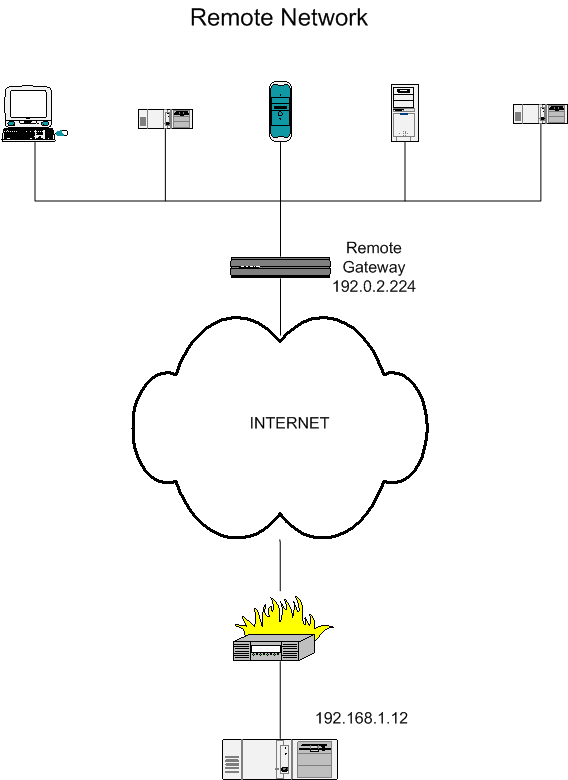Copyright © 2002, 2004, 2005 Thomas M. Eastep
Permission is granted to copy, distribute and/or modify this document under the terms of the GNU Free Documentation License, Version 1.2 or any later version published by the Free Software Foundation; with no Invariant Sections, with no Front-Cover, and with no Back-Cover Texts. A copy of the license is included in the section entitled “GNU Free Documentation License”.
2007/07/19
Table of Contents
It is often the case that a system behind the firewall needs to be able to access a remote network through Virtual Private Networking (VPN). The two most common means for doing this are IPSEC and PPTP. The basic setup is shown in the following diagram:

A system with an RFC 1918 address needs to access a remote network through a remote gateway. For this example, we will assume that the local system has IP address 192.168.1.12 and that the remote gateway has IP address 192.0.2.224.
If PPTP is being used, there are no firewall requirements beyond the default loc->net ACCEPT policy. There is one restriction however: Only one local system at a time can be connected to a single remote gateway unless you patch your kernel from the “Patch-o-matic” patches available at http://www.netfilter.org.
If IPSEC is being used, you should configure IPSEC to use NAT Traversal -- Under NAT traversal the IPSEC packets (protocol 50 or 51) are encapsulated in UDP packets with destination port 4500. Additionally, keep-alive messages are sent frequently so that NATing gateways between the end-points will retain their connection-tracking entries. This is the way that I connect to the HP Intranet and it works flawlessly without anything in Shorewall other than my ACCEPT loc->net policy. NAT traversal is available as a patch for Windows 2K and is a standard feature of Windows XP -- simply select "L2TP IPSec VPN" from the "Type of VPN" pulldown.
Alternatively, if IPSEC is being used then you can try the following: only one system may connect to the remote gateway and there are firewall configuration requirements as follows:
Table 1. /etc/shorewall/rules
| ACTION | SOURCE | DESTINATION | PROTOCOL | PORT | CLIENT PORT | ORIGINAL DEST |
|---|---|---|---|---|---|---|
| DNAT | net:192.0.2.224 | loc:192.168.1.12 | 50 | |||
| DNAT | net:192.0.2.224 | loc:192.168.1.12 | udp | 500 |
The above may or may not work — your milage may vary. NAT Traversal is definitely a better solution. To use NAT traversal:
Table 2. /etc/shorewall/rules with NAT Traversal
| ACTION | SOURCE | DESTINATION | PROTOCOL | PORT | CLIENT PORT | ORIGINAL DEST |
|---|---|---|---|---|---|---|
| DNAT | net:192.0.2.224 | loc:192.168.1.12 | udp | 4500 | ||
| DNAT | net:192.0.2.224 | loc:192.168.1.12 | udp | 500 |
If you want to be able to give access to all of your local systems to the remote network, you should consider running a VPN client on your firewall. As starting points, see http://www.shorewall.net/Documentation.htm#Tunnels or http://www.shorewall.net/PPTP.htm.